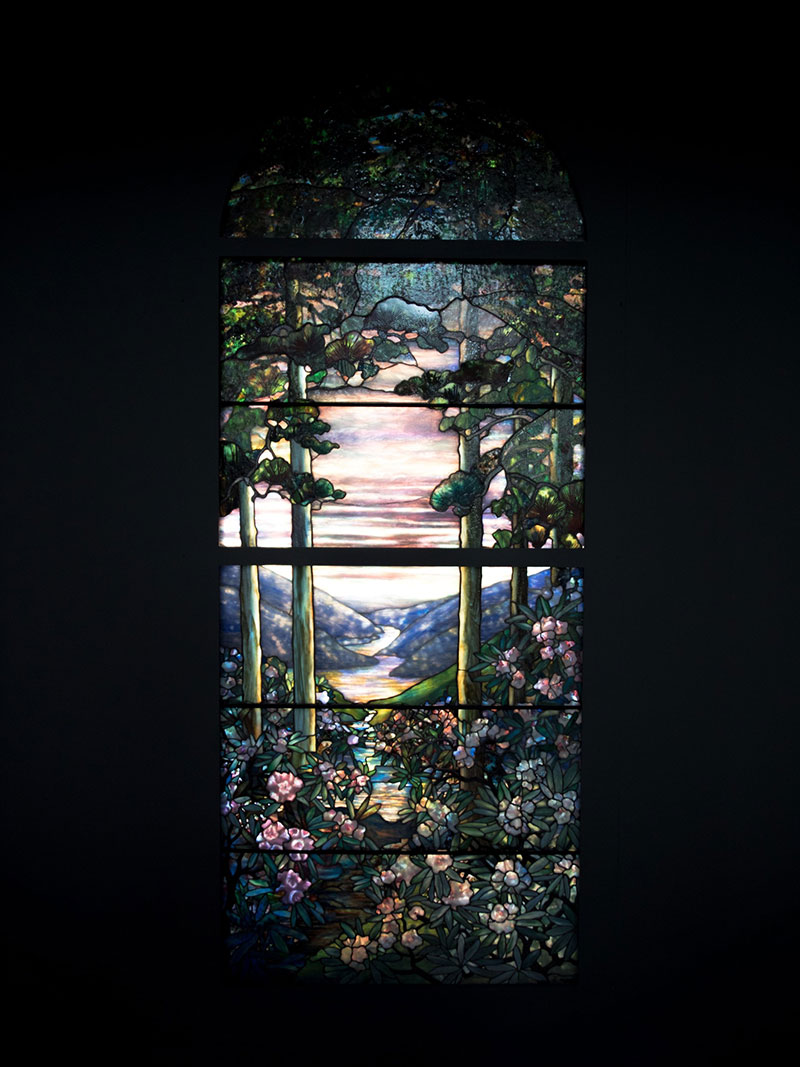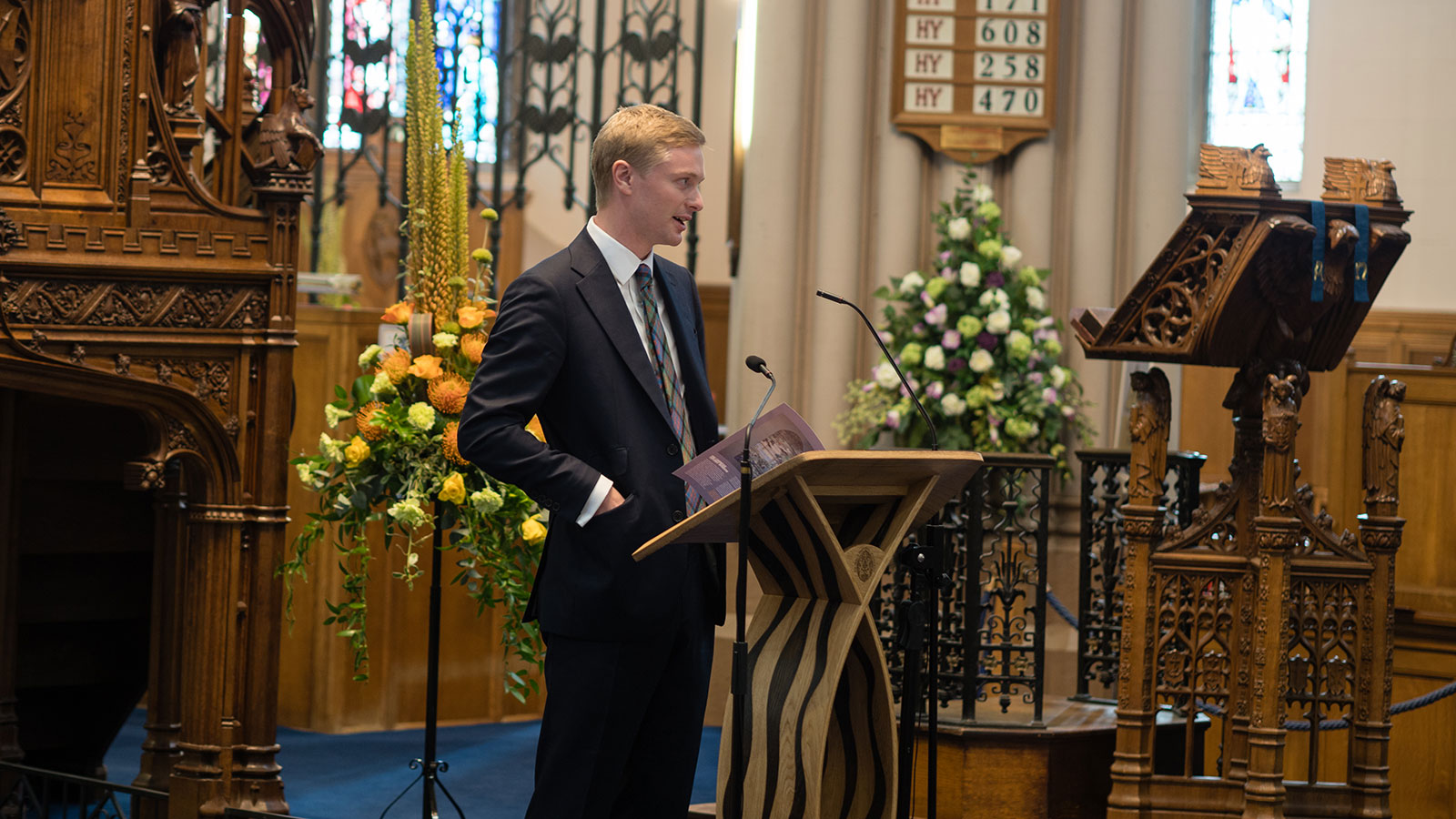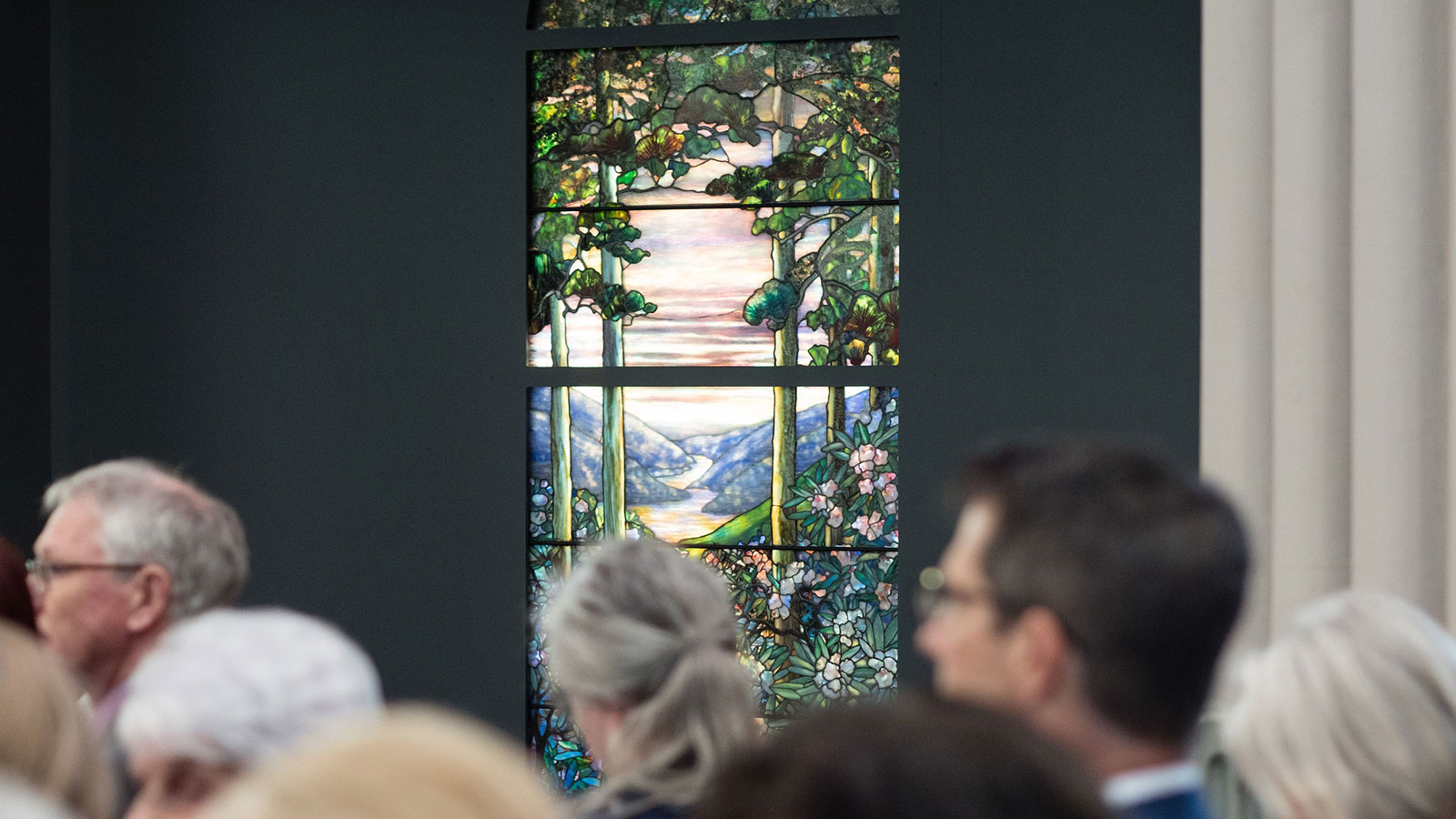Peering Through the Window
Stained Glass from Tiffany Studio Installed in Dunfermline, a Century Later than Expected
The ceremonial activities performed on a long summer day in Andrew Carnegie’s hometown of Dunfermline, Scotland were 106 years in the making.
On Monday, August 12, a century-old debate was put to rest when Carnegie’s longtime wish to install a 11.5 by 7 foot Carnegie Tiffany window at the Abbey Church of Dunfermline was fulfilled at a ceremony attended by friends, institutions, and members of the Carnegie family. “Like Carnegie himself, the story of this window represents commitment, determination, innovation, change, vision, and some controversy,” said William Thomson, Carnegie’s great-grandson, at the ceremony.
“It is also a beautiful work of art and its future destiny touches many beyond Dunfermline,” Thomson continued. “I am therefore honored on behalf of the descendants of Andrew Carnegie and his working trusts and institutions to see this window gifted on his behalf to the Abbey Church of Dunfermline, where it will stand as he wished in memory of his family, amongst the other stained-glass windows of this historic venue.”

In 1913 Carnegie commissioned the famous Tiffany Studios of New York to create a stained-glass window to memorialize his family and hang in the Abbey Church in Dunfermline, but his plans were quickly thwarted. The dean of Dunfermline Abbey and His Majesty’s Commission for Ancient Monuments denied Carnegie’s wish, declaring the window “unecclesiastical and too modern,” according to Diane Shaw, Special Collections cataloguer with the Smithsonian Libraries, writing in Britain’s newspaper The Independent.
Shaw added that “while Carnegie apparently believed that the beautiful landscape depicted in the window expressed the glories of God with a sense of religious emotion, the administrators of the Abbey complained that the window was ‘an anachronism and inharmonious with the rest of the edifice.’”
Although unusual for its intended ecclesiastical setting, the art nouveau-style window stunningly depicts a landscape of trees framing mountains, a river, and flowering rhododendrons, all made of the colored Favrile glass patented by Tiffany in 1894.
During its banishment from the abbey, the window had several homes — first in storage in a cellar, later in Dunfermline’s Carnegie Hall (where it was eventually covered over because the light shining through detracted from stage performances), then in a display case in the concert hall’s restaurant. After a major restoration in 2008, the window was moved to the office of the Carnegie Dunfermline Trust, where it was available for viewing by request only.
Recently when the window’s latest need for repair coincided with the 100th anniversary of Carnegie’s death, proposals were made to install it in the Abbey Church at last.

Ian Wilson, chairman of both the Carnegie Dunfermline and Hero Fund trusts, said, “The window has had a checkered history since it originally arrived in Dunfermline, presenting many challenges of conservation and physical support along the way, resulting in long periods of storage and rest — at one point spending nearly a quarter of a century in storage in the cellar below the Carnegie Swimming Baths and for another lengthy period it was covered in blackout curtains in the Carnegie Hall because it was giving odd reflections from the stage lighting.”
He added: “Therefore, finding the right environment, in every sense, to ensure its accessibility and sustainability for posterity has been paramount to all of us who have cared for the window over the years.”
Stained-glass conservator Mark Bambrough, of Scottish Glass Studio, one of just a handful of such experts in the U.K., spent 10 months with a team of two others repairing, strengthening, and touching up the window before installing it in its new — and intended — home.
Stained-glass windows are typically made of a single layer of transparent glass that’s painted with details on the surface. Tiffany, instead, used up to four layers of opaque glass to depict images. But the result of the Tiffany technique is very heavy windows that need shoring up by experts like Bambrough.
After his restoration project, he and his team installed the window in the abbey, using a system that would allow the window to sit six millimeters above the sill so it has room to sag but is prevented from buckling outward. “Far more people now are going to get the opportunity of seeing a creative piece of art by one of the greatest glass studios in the world,” said Bambrough.
At the dedication ceremony, Thomson summed up the significance of the work’s new home: “The window is now in the place [my great grandfather] intended, and hopefully will be a source of peace, reflection, and inspiration for many years to come.”

